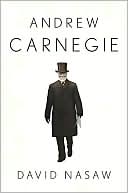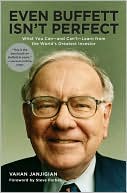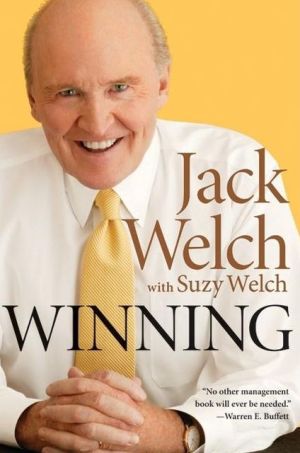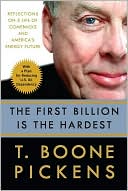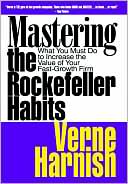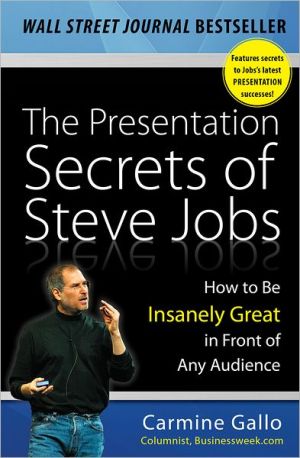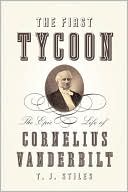The New New Thing: A Silicon Valley Story
As American capitalism undergoes a seismic shift, Michael Lewis, author of the bestselling Liar's Poker, sets out on a Silicon Valley safari to find the true representative of the coming economic age. All roads lead to Jim Clark, the man who rewrote the rules of American capitalism as the founder of (so far) three multi-billion dollar companies--Silicon Graphics, Netscape, and Healtheon. Lewis's shrewd, often brilliantly funny, narrative provides ahead-of-the-curve observations about the...
Search in google:
In the weird glow of the dying millennium, Michael Lewis sets out on a safari through Silicon Valley to find the world's most important technology entrepreneur, the man who embodies the spirit of the coming age. He finds him in Jim Clark, who is about to create his third, separate, billion-dollar company: first Silicon Graphics, then Netscape-which launched the Information Age-and now Healtheon, a startup that may turn the $1 trillion healthcare industry on its head. The New York Times Book Review - Kurt Andersen A splendid, entirely satisfying book, intelligent and fun and revealing and troubling in the correct proportions, resolutely skeptical but not at all cynical, brimming with fabulous scenes as well as sharp analysis....[R]eads, for most of us, like fiction in the best sense, providing character revelation and narrative surprises all along the way....Lewis conveys with a rare combination of wisdom and glee both the thrill and absurdity of late-20th century business.
\ \ \ \ \ Chapter One\ \ \ The Boat That Built Netscape\ \ \ The original plan, which Lord knows didn't mean very much when that plan had been made by Jim Clark, was that we would test the boat quickly in the North Sea and then sail it across the Atlantic Ocean. If nothing went too badly wrong, it would take us six days to sail down to the Canary Islands and another ten to the Caribbean. I had seen Clark in so many different situations that I felt sure I knew him, and the range of behavior he was capable of. But there is nothing like sixteen days on the high seas with a small group of people who have a lot of doubts about each other to test one's assumptions about human character. On the Atlantic crossing Hyperion would carry only the captain and his seven crew members, one or two computer programmers, Clark and me.\ Why Jim Clark was so worthy of study was another matter, and I'll come to that soon enough. For now I'll just say that the quirks in the man's character sent the most fantastic ripples through the world around him. Often starting with the best intentions, or no intentions at all, he turned people's lives upside down and subjected them to the most vicious force a human being can be subjected to, change. Oddly enough, he was forever claiming that what he really wanted to do was put up his feet and relax. He could not do this for more than a minute. Once he'd put up his feet, his mind would spin and his face would redden and he'd be disturbed all over again. He'd thought of something or someone in the world that needed to be changed. His new boat was a case in point.\ For all I knew, Clark would be remembered chiefly as the guy who created Netscape and triggered the Internet boom, which in turn triggered one of the most astonishing grabfests in the history of capitalism. Maybe somewhere in a footnote it would be mentioned that he came from nothing, grew up poor, dropped out of high school, and made himself three or four billion dollars. It might even be said that he had a nose for the new new thing. But to my way of thinking these were only surface details, the least interesting things about him. After all, a lot of people these days have a billion dollars. Four hundred and sixty-five, according to the July 1999 issue of Forbes magazine. And most of them are no more interesting than you or me. You have to trust me on this.\ Along the stretch of canal outside of Amsterdam where the water is deepest, the swollen tankers and stout tugs come to rest. Neither the driver nor I had the slightest idea where in this stand of massive industrial ships one might park a pleasure boat. It was not a place anyone would normally come for fun. The driver finally turned around and asked me exactly what I was looking for, and I told him I was looking for the sailboat that would take me out to sea. He laughed, but in the way people do who want to prove they get the joke. The Dutch do this a lot. They appear to live in terror of being mistaken for Germans, and to compensate by finding a funny side to life where none exists. Tell a Dutchman that your dog just died, and he will pretend that you have just made some impossibly witty remark. This is what the driver did when I told him I was about to go sailing in the North Sea. It was early December, the winds were up around thirty-five miles an hour, and the North Sea—well, the North Sea in winter is not the place to be in any kind of sailboat. The driver roared in the most un-Germanly fashion. "Yachting!" he said, and burst out laughing again, far too loudly, as if he had seen me my one joke and raised me another. "Yes," I said, which only brought forth more peals.\ The great mast rescued us. One moment we were lost; the next we turned a corner and spotted on the horizon the tall, rigid white rod. Its brightly colored pennants flew in relief against the gray sky, and its five spreaders reached up into the clouds like a chain of receding crucifixes. They beckoned everyone within five miles to drop his jaw in wonder. It was then that the driver finally stopped laughing. "Yacht," after all, is a Dutch word.\ Three minutes later we drove onto the dock up near the low white sailboat, next to the name painted in blue cursive on the side: Hyperion. You could tell the driver knew at least a bit about sailboats because he immediately called the boat a "sloop." A sloop is a sailboat with one mast, to distinguish it from a sailboat with two masts, called a "ketch." "How long is this sloop?" he asked me. "One hundred and fifty-five and a half feet," I said. "That is the biggest sloop I have ever heard of," he said. I said that that was because it was the biggest sloop ever built. His eyes moved from the hull to the mast, and from the mast to the boom, and from the boom to the sails, which, unfurled, would cover a football field. "How many men are needed to handle the sails?" he asked. "None," I said, "at least in theory."\ The Dutchman laughed again, but nervously, as if deciding whether it was better to be mistaken for a German or a fool. It wasn't until I told him that the boat did not exactly require a crew, that it could be completely controlled by a computer, that conviction returned to his laughter. The whole thing, after all, had been some foreigner's idea of a joke.\ When I arrived that morning of the first North Sea trial, Wolter Huisman was standing on the deck beneath the mast. Wolter owned the boatyard that had built Hyperion. Wet snow dribbled from his rain gear, and his woolen cap drooped around his ears. His chin sunk glumly into his dark tattered parka, and his old Dutch shoulders sagged like a commuter's at the end of a long day. He seemed to be melting. Coming up from behind, I caught him muttering to himself. Later I learned that Wolter hadn't slept. He'd stared at the ceiling all night, worrying.\ "What's the worst weather you ever tested a sailboat in?" I asked him.\ "Dis wedder," he replied. Then he sighed and said, at once apropos of nothing and everything, "When Yim wants something, Yim gets it."\ In his pessimism Wolter had found a strategy for getting through this life and onto a new and better one: so long as he insisted to himself that tomorrow would be worse than today, it did not matter as much if it was. He still had the Dutch habit of laughing at whatever you told him, just in case it happened to be a joke. But his laugh was harsh and unhappy. Wolter was pushing seventy, and his heart was old and weak, but this gloom of his was young and vital. Who could blame him? His fate was now intertwined with Hyperion's. And Hyperion was at this very moment the most spectacular maritime disaster waiting to happen since the launching of the Titanic.\ Of course, every new yacht that left the Huisman Shipyard was, so far as Wolter was concerned, an accident waiting to happen. It had taken Wolter, and his father before him, and his father's father before him, decades to build their reputation as perhaps the world's finest makers of yachts. Each time Wolter launched a new yacht, that reputation went up for grabs. But this was different. This was new.\ "Where is he?" I asked.\ "Behind duh computer," said Wolter. Pause. "When Yim sits behind duh computer, he is not any more in dis world."\ That was true. He was creating a new one.\ On that bitterly cold December morning Hyperion left its moorings so silently that the programmers didn't notice. The programmers were three young men Jim Clark had flown over from Silicon Valley to the North Sea to help him turn his new yacht into a giant floating computer. Technogeeks. Each was in his early thirties, each possessed a wardrobe that appeared to consist of nothing but T-shirts and blue jeans, and each was a former employee of Clark's first technology start-up, Silicon Graphics. They clambered up on deck from below, where they had been typing away on their keyboards, to see what they'd wrought. It was as if they hadn't quite believed that Hyperion would float.\ The bridge was a technogeek fantasy. Where an experienced sailor would expect to find a familiar row of gadgets—radar, sonar, radio, GPS, and so on—were four large flat-panel computer display screens. The three young men took seats in front of these and started pressing buttons. Soon enough they were making small quivering sounds that suggested all was not right with the computers. On one of the screens was a map of Holland. The map focused on the area immediately around us, perhaps twenty square miles. A miniature Hyperion inched stealthily across it, like a boat in a video game. But according to the computer map we were chugging on top of a farmer's field, and heading toward an airfield. The slender canal we were actually on lay three miles to the east. Any captain using the computer to run the boat would think he was heading full tilt into an aircraft watchtower.\ I walked out onto the deck to find that the same map occupied the computer screen in front of Allan Prior, the man Clark had hired to captain Hyperion. Allan was from the old school. He'd won the Whitbread around-the-world race in a sailboat so stripped down that it looked vandalized. Allan himself looked vandalized; the wind and the sun had ravaged his complexion. Allan did not believe that sailboats should be run by computers. Now he was staring straight ahead, attempting to avoid a large ferry that was making a dash across the canal. "Don't bother me with that," he said when I asked him why his boat was in the middle of a wheat field. "That's a computer problem." Clearly, he was in no mood to consider the undeniable fact that his entire boat was a computer problem.\ I returned to the programmers on the bridge. After a couple of minutes of furious typing, they had the boat back on the water. Yet the head programmer, a fellow named Steve Hague, retained a certain dubiousness. His eyes darted back and forth between the edge of the canal and the map on which Hyperion chugged along. All of the computer's gauges seemed to be either inadequate or inaccurate. A captain steering off them—which Allan Prior at that moment declined to do—would not only think that he was sailing through a wheat field. He'd think he was sailing through a wheat field in the wrong direction. For no apparent reason a red light flashed on one of the screens. It said, DANGER, DANGER, DANGER.\ Steve punched some buttons. According to the computer we'd been grounded. "It is truly unfortunate that we find ourselves in this situation," he said, at length.\ Yes it was. Just a few hours earlier the weatherman had predicted Force 4 sailing conditions. Force 4 implied pleasant winds of twenty knots and seas of perhaps six feet. Even before we left the canal and passed through the locks into the North Sea, the report lost its credibility. The gauges on the boat that measured the speed of the wind had frozen at fifty knots—the computer had not been programmed to register winds any higher.\ As we passed through the lock and into a harbor, we could finally see why Wolter Huisman muttered to himself. Fifteen-foot waves crashed against the seawall and flicked their white foam thirty feet in the air, where it mingled with falling snow. Gusts of wind blew at seventy miles an hour. The boat suddenly began to rock too violently for anyone to stare very long into his computer. The programmers scrambled out from the bridge and onto the deck, where Allan and Wolter stood together in the snow with pretty much everyone else: twelve boatyard workers, seven crew members, two Dutch friends of Clark's, a photographer, and a German television crew present to document the launching of the world's first computerized sailboat. The only person missing was Clark himself, but, then, people who knew Clark knew better than to expect him to be where he was meant to be. Sooner or later he'd turn up, usually when he was not wanted.\ "It's too goddamn windy out there," Wolter Huisman shouted, to no one in particular. "It is wedder to test people, not boats." He shot Allan a meaningful look, who shot it right back to him. They both knew that the weather was the least of their problems.\ When Hyperion left the seawall behind, it put itself at the mercy of a furious North Sea. Instantly, the boat was seized by forces far greater than itself; its magnificence was trivialized. A furious partial corkscrewing motion pulled us up to the right and then down to the left. We'd dip into a trough, experience a brief, false moment of calm, and then be picked up and twisted again. The German television soundman dropped to his knees, crawled over the side of the boat, and vomited. There was no question of his suppressing the urge; it was as if someone had pushed a button on the computer that instructed the man to be sick. There, prone and puking on the violent deck, he lifted his microphone into the air to capture the ambient noise. Room tone. A young Dutch friend of Clark's along for the ride chuckled and said, "The Germans. They will always do the job they are given no matter what."\ But the German soundman was a trend setter. It took about a minute and a half before the first Dutch boatyard worker leaned over the safety ropes and vomited the Saint Nick's cake he'd been served an hour before. A minute later he was joined by two poor colleagues who had been down below monitoring the engines. A few minutes after that the three fellows working on the foredeck came back to join the party. Then came the rest of the German television crew. Hyperion rose and twisted and plunged and settled, then rose and twisted and plunged and settled all over again. Within twenty minutes eight men had gone as lifeless as if they had been unplugged from their sockets. Those who weren't sick pretended to be amused. They clustered around the captain and clung to the rails and smiled crazily at each other.\ Eventually, Allan reduced the engine speed and hoisted the sail. He did this by pushing a button, which told the computer to hoist the sail, which the computer, for once, did. The mast was hatched with crossbars, called spreaders. The sail rose with a great flapping sound past them one by one until at length it reached the second-to-last spreader. Just when you thought there could be no more sail, more sail appeared. The mainsail alone was 5,600 square feet, a bit more than a quarter of a football field. The world's largest sail, as it happened. It was expected to handle up to eleven tons of wind. That is, the force on its ropes was the equivalent of dangling from their ends an eleven ton steel block. Already the ropes were being tested. "The wind is too strong to let it all out," Allan shouted to Wolter. Wolter nodded solemnly.\ Not until you have hoisted a sail and turned off the engine can you fully appreciate the euphoria that accompanied the invention of the steam engine. The boat, now engineless, was subjected to a grosser, more primal force. The waves crashed and the spray came in sheets and the partial corkscrewing motion became a full corkscrewing motion. The eight men in Puker's Alley retched all over again. This time it wasn't so funny to the others. A wave washed over the deck and knocked two of the Dutch shipyard workers on the bow off their feet; they were saved from the sea by their safety ropes, which they alone wore. The three technogeeks clung to the rails and tried not to remember that they didn't belong here. They knew without being told that anyone who went overboard was as good as gone. A person tossed into the North Sea in December would last only a few minutes before freezing to death; and in these conditions it might take an hour to pick up a man overboard, if you could find him. Maybe for this reason no one bothered to don a life jacket.\ It was then I noticed Wolter, his arm wrapped tightly around a rail, trying not to look at everything at once. It was Wolter whose ass was really on the line out here. If a Huisman mast snapped, or a Huisman hull leaked, and a Huisman yacht sank, a long and glorious family tradition bubbled to the bottom of the North Sea floor. That is why Wolter and his three hundred stout and sturdy craftsmen back in their tiny village in the north of Holland resisted change. They did not cling to the past mindlessly. But they were as immune as people can be to the allure of a new way of doing things. Traditional, in a word.\ Wolter had spent the past three years wrestling with a great force that had neither the time nor the taste for tradition. The struggle had turned Wolter into an old man. Before Jim Clark had come to the boatyard at the end of 1995, Wolter had never heard of Silicon Valley, or of the Internet, or, for that matter, of Jim Clark. Yim, as Wolter called him, had sat down amid the exquisite models of ships built centuries before, and the old black-and-white photographs of Wolter and his ancestors at work building them. He had seen a yacht Wolter had just finished building, he said, and wanted one like it. Only bigger. And faster. And newer. He wanted his mast to be the biggest mast ever built. And he wanted to control the whole boat with his computers. Specifically, he wanted to be able to dial into his boat over the Internet from his desk in Silicon Valley and sail it across the San Francisco Bay. It was as if someone had distilled manic late twentieth-century American capitalism into a vial of liquid and poured it down Wolter's throat.\ Only a small part of the discomfort experienced on that wintry, gray December afternoon on the North Sea was physical. Most of it occurred inside of people's minds. Clark pushed people into places they never would have gone willingly. Often the people who'd been pushed assumed, for one reason or another, that Jim Clark, the rich man from Silicon Valley who seemed to know what was about to happen before anyone else, would make sure that it didn't happen to them. The problem with their assumption was that it wasn't true: all Jim Clark ever guaranteed anyone was the chance to adapt. His penchant for disrupting his environment was at the bottom of every new company he created; now he'd used it to transform a sailboat. The many strange deep sensations on board—Wolter's dread, Allan's frustration, the computer geeks' unlikely feelings of responsibility—all were the doing of Clark and his new technology. It was a single great, messy experiment, which, in retrospect, was bound not to end well. And it didn't.\ At the moment when the seas were most fierce, the boat's tiny population huddled together on the stern. Hyperion pitched and rolled; its passengers clung to the rails and to each other. Even Allan, who had sailed around the world three times in boats the size of Clark's bathtubs back in California, was numb as a mummy. "It's not sailing," he hollered to Wolter. "It's more like throwing something into a washing machine to see what breaks."\ It would have occurred to no sane person at this point to crawl along the side and have a look around. But that is what Clark did. He emerged from his cabin, where he'd been fiddling with his computer, and made his way up the safety ropes along the side. Since Hyperion was 157 feet long, and he was six foot three, this took some doing. I should say that he did not look as he was expected to look; his appearance was just another element of surprise in a surprising universe. He was tall and broad in a way computer nerds are not supposed to be. His blond hair was neatly combed. His features were small and delicate: one could easily imagine that he resembled his mother. He was handsome. Unlike most men who make billions of dollars for themselves, he had an expansive, easy manner. At any rate, that's the first impression he made. If you looked closely, you could see that each of the slow and easy gestures was countered by another that was small, tense, almost involuntary. His body language was engaged in a debate with itself. It was as if he had an itch that he was refusing to scratch.\ When he reached the bow, he climbed up toward the world's tallest sailboat mast, which rose to a point 189 feet over the deck. He put his hand on it, to steady himself. There he stood for some long while, a large yellow lump of Gore-Tex, directly beneath the tall, rigid white rod of his ambition. He was looking, it appeared, straight up at the sky. What he was looking for, no one could say. Probably he was thinking about something he might like to change. Possibly he was not thinking at all but groping. That is how his mind worked—the logic always came after the initial, inexplicable, primal impulse. But whatever he was doing he didn't do it for long. Once he'd found his footing, his mast began to sway. At first its movements were barely perceptible; then they became more pronounced; at last they were violent.\ Later someone who had been on the bridge said he had heard a loud crack. The rubber at the base of the world's tallest mast had shattered. The foot-wide seal that kept Clark's 189 feet of carbon fiber standing straight had frozen into a crystal, and then broken to bits. The mast came loose in its socket. Its three and a half tons rocked wildly back and forth, like a broomstick rattling around inside a garbage can. As quickly as he could press a button, Allan Prior lowered the sail, before the mast itself broke and fell over into the sea.\ "Yesus," Wolter Huisman muttered, and looked away.
Preface 1. The Boat That Built Netscape 2. The Accelerated Grimace 3. The Pastin a Box 4. Disorganization Man 5. Inventing Jim Clark 6. The Boom and the Mast 7. Throwing Sand in Capitalists' Eyes 8. The Great Brain Quake of August 9, 1995 9. The Home of the Future? 10. God Mode 11. How Chickens Become Pork 12. New New Money 13. Cheese Sandwiches for Breakfast 14. Could Go Either Way 15. At Sea in the Home of the Future 16. Chasing Ghosts 17. The Turning Point 18. The New New Thing 19. The Past outside the Box Epilogue Acknowledgments
\ FortuneLewis is a gifted storyteller...[he] makes his case through a series of beautifully rendered set-pieces....While many writers will try to bring this fantasyland to life, few will do so as vividly as Michael Lewis.\ \ \ \ \ SlateMichael Lewis' The New New Thing is the best book ever written about Silicon Valley. There. I've said it. Said it to you (wondering, to be sure, whether you agree—do you?); said it to the readers of Slate ; but most of all, I've said it to myself. Michael Lewis' The New New Thing is the best book ever written about Silicon Valley. There. I've said it again.\ \ \ Los Angeles Times Book ReviewLewis brilliantly describes Clark's intensity and passion, his genius for technology and leadership and his impatience with convention. He also faithfully chronicles Clark's ruthlessness, willingness to exact revenge on opponents and ability to casually upset people's lives. The fact that these last qualities are described in almost complimentary terms reflects a Silicon Valley sensibility that they're laudable.\ \ \ \ \ Business Week[Lewis's] incisive and entertaining volume largely succeeds in getting past the glitter of money to identify the real key to the Valley's vibrancy: new ideas....Lewis provides a look that is penetrating as anything written so far.\ \ \ \ \ Steven LevyLewis has a natural talent for spinning hilarious scenes and uncovering wicked details.\ —Newsweek, 25 October 1999\ \ \ \ \ Fred MoodyRemarkable....Clark proves to be a character as enthralling as any in American fiction or non-fiction....Lewis tells a great story in this book, with prose that ranges from the beautiful to the witty to the b, 22 October 1999\ \ \ \ \ Jeffrey KleinThe New New Thing is bound to become the big big book of the fall season, and deservedly so. \ San Jose Mercury News 10 October 1999\ \ \ \ \ Joshua QuittnerA superb book....Lewis makes Silicon Valley as thrilling and intelligible as he made Wall Street in his best-selling Liar's Poker.\ — Time, 25 October 1999\ \ \ \ \ Kurt AndersenA splendid, entirely satisfying book, intelligent and fun and revealing and troubling in the correct proportions, resolutely skeptical but not at all cynical, brimming with fabulous scenes as well as sharp analysis....[R]eads, for most of us, like fiction in the best sense, providing character revelation and narrative surprises all along the way....Lewis conveys with a rare combination of wisdom and glee both the thrill and absurdity of late-20th century business.\ —The New York Times Book Review\ \ \ \ \ Wired...Michael Lewis takes readers inside the now-familiar world of Silicon Valley excess, the frantic deal making, the absurdly hyped expectations, the phenomenal wealth. But the 39-year old best-selling author of Liar's Poker and The Money Culture brings something genuinely exotic to the mix: near-total access to one of the Valley's biggest and most enigmatic players.\ \ \ \ \ Rich KarlgaardA great book....The New New Thing is the best Silicon Valley book to come out yet. \ —Forbes, 18 October 1999\ \ \ \ \ Michiko KakutanLewis does for the late 1990s world of techno-geeks and software cowboys what he did in Liar's Poker for the 1980s Wall Street world of traders and arbitrageurs.\ — The New York Times ,26 October 1999\ \ \ \ \ Mark GimeinLike all Lewis' writing, The New New Thing is funny. It is funny in a wry, carefully observed way -- "Gibagibagibagiba," babbles a baby unfortunately brought to a gathering of investment bankers. It is funny also in a slashing, profane way: "Clark's friends who did not know Ed McCracken," writes Lewis of Clark's early nemesis, "came to believe the man's name was Fucking Ed McCracken." Yet what makes The New New Thing an exceptional book is not how funny it is, but how closely it sticks to a mission of investigating the mythic properties of Clark's singularly mercurial character.\ —Salon , 22 October 1999\ \ \ \ \ Jim EvansWhen it became clear that renowned nonfiction writer Michael Lewis was trolling Silicon Valley to gather material for the definitive Internet book, a lot of people took notice. After all, Lewis had written one of the seminal 1980s greedy Wall Street stories, Liar's Poker. While he's penned other books since then, how better to follow a book on the business story of the 1980s than with one about the business story of the 1990s (and maybe the century): the creation and explosion of the Internet? \ With apologies to Michael Wolff, no one has written the big Web business book yet, including Lewis. Maybe it's just too early in the game.\ But that's OK. The Web is just too damn big to encapsulate its creation in just one tome. Instead of chronicling the rise of Kleiner Perkins Caufield & Byers, America Online, Yahoo and others, Lewis focuses on the one man who is as close to the center as anyone, Jim Clark.\ Clark started three companies - Silicon Graphics Inc., Netscape and Healtheon - each worth more than $1 billion. His own personal fortune after Healtheon went public rocketed to over $2 billion.\ Clark is portrayed as a maverick who doesn't suffer fools gladly, a fanatic about making money and controlling his destiny. Most important, Clark as engineer is emphasized.\ This is not a small point. Before the technology business became what it is, the financiers, bankers and managers controlled everything. But after he started Silicon Graphics, Clark learned a valuable lesson.\ At SGI, Clark and his beloved engineers were effectively squeezed out of the equity they thought they deserved by venture capitalists. So when Clark started his next company, Netscape, he made sure that wouldn't happen again. The terms for investment in Netscape that he secured with Kleiner's John Doerr were revolutionary. Instead of being able to buy into Netscape at the same price at which Clark funded the company, Doerr paid three times that amount, and Clark retained 25 percent of Netscape for himself.\ That's the big idea of Lewis' book. Since Netscape, giving out equity in a Net company has become central to attracting and retaining key engineering talent. Clark also did the unthinkable when, over CEO Jim Barksdale's initial objections, he took Netscape public in August 1995; the company was only 18 months old and had no profiits. But what was unthinkable then is now commonplace. In part, that's due to Jim Clark.\ In the end, Clark seems to be an idea man only. He has little patience for running his businesses. Yet, that's where some of the Clark magic comes in: He attracts the best people to run his companies. Whether it's Mike Long, the CEO of Healtheon, or Jim Barksdale of Netscape, Clark gives the reins to an experienced executive and goes on to the next big thing.\ He can also viciously turn on the chosen executive, as Lewis recounts in hilarious detail. Take Ed McCracken, the former CEO of Silicon Graphics. McCracken was brought in from Hewlett-Packard to run SGI when it became apparent that Clark was not born to be a manager. The problem with McCracken was that he was the Valley's version of an Organization Man, or a manager with a taste for conformity. In Clarkspeak, Ed McCracken became "Ed McMuffin" or "Fucking Ed McCracken."\ Disdain for authority is a common thread throughout the book. Clark doesn't think much of venture capitalists and bankers, either. To him, they're parasites who take advantage of engineers. Lewis seems to adopt the same stance. In a passage in which Clark, Healtheon CEO Long and a banker from Morgan Stanley are flying to Europe for Healtheon's IPO road show, Lewis never names the banker. He writes: "Clark let the Wall Street people sell his companies to the public and make him billions of dollars, but only because he hadn't yet figured out a way to get rid of them."\ Clark seems dedicated to getting rid of people who complicate his life. He started Healtheon to get rid of health-care professionals who only add to red tape in the medical world. With his latest startup, MyCFO.com, Clark hopes to get rid of a layer of accounting management with whom the ultra-rich deal every day.\ Lewis, of course, understands Clark and as illustration tells of a boating trip he took with him across the Atlantic. Clark built the boat so it could be sailed by computer, with the help of 24 SGI workstations. The boat, or rather its computers, performed marginally. But Lewis, in the end, realizes that it wasn't so much the sailing of a computerized boat that was important - it was the idea that such a thing could be done.\ —Industry Standard\ \ \ \ \ \ Industry StandardThe author got famous in the 1980s with his tale of Wall Street. Now he's turned his glance toward Silicon Valley.\ By Michael Lewis \ (W.W. Norton & Co.) \ When it became clear that renowned nonfiction writer Michael Lewis was trolling Silicon Valley to gather material for the definitive Internet book, a lot of people took notice. After all, Lewis had written one of the seminal 1980s greedy Wall Street stories, Liar's Poker. While he's penned other books since then, how better to follow a book on the business story of the 1980s than with one about the business story of the 1990s (and maybe the century): the creation and explosion of the Internet?\ With apologies to Michael Wolff, no one has written the big Web business book yet, including Lewis. Maybe it's just too early in the game.\ But that's OK. The Web is just too damn big to encapsulate its creation in just one tome. Instead of chronicling the rise of Kleiner Perkins Caufield & Byers, America Online, Yahoo and others, Lewis focuses on the one man who is as close to the center as anyone, Jim Clark.\ Clark started three companies - Silicon Graphics Inc., Netscape and Healtheon - each worth more than $1 billion. His own personal fortune after Healtheon went public rocketed to over $2 billion.\ Clark is portrayed as a maverick who doesn't suffer fools gladly, a fanatic about making money and controlling his destiny. Most important, Clark as engineer is emphasized.\ This is not a small point. Before the technology business became what it is, the financiers, bankers and managers controlled everything. But after he started Silicon Graphics, Clark learned a valuable lesson.\ At SGI, Clark and his beloved engineers were effectively squeezed out of the equity they thought they deserved by venture capitalists. So when Clark started his next company, Netscape, he made sure that wouldn't happen again. The terms for investment in Netscape that he secured with Kleiner's John Doerr were revolutionary. Instead of being able to buy into Netscape at the same price at which Clark funded the company, Doerr paid three times that amount, and Clark retained 25 percent of Netscape for himself.\ That's the big idea of Lewis' book. Since Netscape, giving out equity in a Net company has become central to attracting and retaining key engineering talent. Clark also did the unthinkable when, over CEO Jim Barksdale's initial objections, he took Netscape public in August 1995; the company was only 18 months old and had no profiits. But what was unthinkable then is now commonplace. In part, that's due to Jim Clark.\ In the end, Clark seems to be an idea man only. He has little patience for running his businesses. Yet, that's where some of the Clark magic comes in: He attracts the best people to run his companies. Whether it's Mike Long, the CEO of Healtheon, or Jim Barksdale of Netscape, Clark gives the reins to an experienced executive and goes on to the next big thing.\ He can also viciously turn on the chosen executive, as Lewis recounts in hilarious detail. Take Ed McCracken, the former CEO of Silicon Graphics. McCracken was brought in from Hewlett-Packard to run SGI when it became apparent that Clark was not born to be a manager. The problem with McCracken was that he was the Valley's version of an Organization Man, or a manager with a taste for conformity. In Clarkspeak, Ed McCracken became "Ed McMuffin" or "Fucking Ed McCracken."\ Disdain for authority is a common thread throughout the book. Clark doesn't think much of venture capitalists and bankers, either. To him, they're parasites who take advantage of engineers. Lewis seems to adopt the same stance. In a passage in which Clark, Healtheon CEO Long and a banker from Morgan Stanley are flying to Europe for Healtheon's IPO road show, Lewis never names the banker. He writes: "Clark let the Wall Street people sell his companies to the public and make him billions of dollars, but only because he hadn't yet figured out a way to get rid of them."\ Clark seems dedicated to getting rid of people who complicate his life. He started Healtheon to get rid of health-care professionals who only add to red tape in the medical world. With his latest startup, MyCFO.com, Clark hopes to get rid of a layer of accounting management with whom the ultra-rich deal every day.\ Lewis, of course, understands Clark and as illustration tells of a boating trip he took with him across the Atlantic. Clark built the boat so it could be sailed by computer, with the help of 24 SGI workstations. The boat, or rather its computers, performed marginally. But Lewis, in the end, realizes that it wasn't so much the sailing of a computerized boat that was important - it was the idea that such a thing could be done.\ —Jim Evans\ \ \ \ \ \ Publishers WeeklyWhile it purports to look at the business world of Silicon Valley through the lens of one man, that one man, Jim Clark, is so domineering that the book is essentially about Clark. No matter: Clark is as successful and interesting an example of Homo siliconus as any writer is likely to find. Lewis (Liar's Poker) has created an absorbing and extremely literate profile of one of America's most successful entrepreneurs. Clark has created three companies--Silicon Graphics, Netscape (now part of America Online) and Healtheon--each valued at more than $1 billion by Wall Street. Lewis was apparently given unlimited access to Clark, a man motivated in equal parts by a love of the technology he helps to create and a desire to prove something to a long list of people whom he believes have done him wrong throughout his life (especially his former colleagues at Silicon Graphics). As Lewis looks at the various roles of venture capitalists, entrepreneurs and programmers and at how these very different mindsets fit together in the anatomy of big deals, he gives readers a sense of how the Valley works. But the heart of the book remains Clark, who simultaneously does everything from supervise the creation of what may be the world's largest sloop to creating his fourth company (currently in the works). Lewis does a good job of putting Clark's accomplishments in context, and if he is too respectful of Clark's privacy (several marriages and children are mentioned but not elaborated on), he provides a detailed look at the professional life of one of the men who have changed the world as we know it. (Oct.) Copyright 1999 Cahners Business Information.\ \ \ \ \ Library JournalListeners are due for a thrilling ride through the strange landscape of computer geeks and billionaires, with a focus on the unique story of after-tax multibillionaire Jim Clark, founder of Silicon Graphics, Inc. (SGI), Netscape, and the newly emerging Healtheon. Lewis (Liar's Poker) focuses on Clark's story as the key to comprehending the newly emerging Internet wealth, emphasizing his battles between Netscape and Microsoft; his almost immediate success with SGI; his emotional investment in his computer-driven sailboat, the Hyperion; leading up to his next new, new thing, Healtheon, Clark's Internet health site envisioned literally to transform the $1 trillion healthcare industry. Clearly, Clark's nonpareil personae is an excellent example of how vastly different it is doing business in the age of the Internet, but this is not so much an analysis of Clark's business successes as it is a sort of technobiography. The numerous lengthy anecdotal tales and scenarios, narrated by Bruce Reizen, enrich the understanding of this exemplary personality, a high-tech rags-to-riches tale of a poor boy from Plainview, TX, but add little to a full appreciation for the strategies around these companies--a story yet to be told. Highly recommended for all public libraries.--Dale Farris, Groves, TX Copyright 2000 Cahners Business Information.\\\ \ \ \ \ BooknewsA character study of Jim Clark, the founder of Silicon Graphics, Netscape, and Healtheon. The narrative discusses Clark's entrepreneurial ideas and sheds light on the history of the Internet, all in the midst of exploring the creation and travels of Clark's high-tech computer-controlled single-mast sailboat . Annotation c. Book News, Inc., Portland, OR (booknews.com)\ \ \ \ \ NewsweekJust reading about this dynamo is exhausting — and inspiring.\ \ \ \ \ Michiko Kakutani[Lewis] does for the late 1990s world of techno-geeks and software cowboys what he did in Liar's Poker for the 1980s Wall Street world of traders and arbitrageurs.\ — The New York Times\ \ \ \ \ Mood[R]emarkable....Clark proves to be a character as enthralling as any in American fiction or non-fiction....Lewis tells a great story in this book, with prose that ranges from the beautiful to the witty to the breathtaking.\ — Wall Street Journal\ \ \ \ \ WiredMichael Lewis takes readers inside the now-familiar world of Silicon Valley excess, the frantic deal making, the absurdly hyped expectations, the phenomenal wealth. But the 39-year old best-selling author of Liar's Poker and The Money Culture brings something genuinely exotic to the mix: near-total access to one of the Valley's biggest and most enigmatic players.\ \ \ \ \ Rich Karlgaard[A] great book....The New New Thing is the best Silicon Valley book to come out yet.\ — Forbes\ \ \ \ \ Arnold Quittner[A] superb book....[Lewis] makes Silicon Valley as thrilling and intelligible as he made Wall Street in his best-selling Liar's Poker.\ — Time\ \ \ \ \ Po BronsonLewis Pulls it off. He convinces the reader by using the same technique that Jim Clark employed to sell his visionary enterprises: He asserts his ideas boldly, and pretty soon people start to believe them.\ —Talk Magazine\ \ \ \ \ Walter KirnIt's an adventure story, full of peril, full of miscalculations and reversals, both at sea and on the stock exchange, but one that stops short of catastrophe. Which makes it all the more suspenseful, finally.\ —New York\ \ \ \ \ Business 2.0Michael Lewis's latest, The New New Thing is at once a rollicking, rip-roaring tale of an industry gone wild, and a pull-no-punches portrait of one of high tech's most willful, fascinating, and colorful characters, Jim Clark...While Lewis cuts deep, he never cuts off more than ge can handle. It's simply the best book about high tech to come along since Michael Hiltzik's Dealers of Lightning.\ \ \ \ \ Andrew FergusonLewis is a gifted storyteller...[he] makes his case through a series of beautifully rendered set-pieces....While many writers will try to bring this fantasyland to life, few will do so as vividly as Michael Lewis. \ — Fortune\ \ \ \ \ Joe NoceraMichael Lewis' The New New Thing is the best book ever written about Silicon Valley. There. I've said it. Said it to you (wondering, to be sure, whether you agree--do you?); said it to the readers of Slate; but most of all, I've said it to myself. Michael Lewis' The New New Thing is the best book ever written about Silicon Valley. There. I've said it again.\ —Slate\ \ \ \ \ Alex Soojung Kim-PangLewis brilliantly describes Clark's intensity and passion, his genius for technology and leadership and his impatience with convention. He also faithfully chronicles Clark's ruthlessness, willingness to exact revenge on opponents and ability to casually upset people's lives. The fact that these last qualities are described in almost complimentary terms reflects a Silicon Valley sensibility that they're laudable.\ —Los Angeles Times Book Review\ \ \ \ \ Robert D. Hof[Lewis's] incisive and entertaining volume largely succeeds in getting past the glitter of money to identify the real key to the Valley's vibrancy: new ideas....Lewis provides a look that is penetrating as anything written so far. \ — Business Week\ \ \ \ \ Kirkus ReviewsA rip-roaring profile of the high-rolling technology entrepreneur Jim Clark, and the strange Silicon Valley subculture in which he thrives, from one of our best business journalists. Michael Lewis, the petulant sprite whose Liar's Poker (1989) hilariously exposed the venalities of Wall Street investment bankers, vies for Tom Wolfe's ice cream suit with an effortlessly glib account of how the last decade turned Jim Clark, a middle-aged, chronically depressed Texas-born physicist whose futuristic concepts earned him little more than ridicule, into a Promethean, globe-trotting billionaire vainly searching for the next new thing that might make him happy. Like Ken Kesey in The Electric Kool-Aid Acid Test, Clark is, for Lewis, a romantic American outlaw, as well as a trickster who avenges himself on starched-shirt capitalists by creating wildly risky, money-losing hi-tech businesses that may never become profitable—Silicon Graphics, Netscape, Healtheon—but that nevertheless make billions for Clark when they go public. What brings in the bucks is Clark's no-nonsense appeal to the brilliant engineers who do the real work, his insufferable egotism, and his pie-in-the-sky imagination, which is not always as prescient as he would like. (When Clark's concept of a $1 million computerized yacht that can sail itself around the world without human hands doesn't survive the transition to working prototype, it isn't clear whether the yacht's engine died in the middle of the Atlantic because the computer thought the boat was in the African Sahara, or simply because of a faulty sensor.) Lewis also notes in passing the famous Microsoft antitrust suit, which Clark originated when he leaked to theUS Justice Department a Microsoft executive's threat to put Netscape out of business if the company refused to let Microsoft in as a partner. The result? Clark got even richer when Netscape merged with America Online, and invited Microsoft to be a partner in his next, new new thing. Funny, feverishly romantic business reporting in which the American lust for wealth becomes a Bryonic quest for the next dream that will change the world. (Author tour)\ \ \ \ \ The New York Times Book ReviewIt is a splendid, entirely satisfying book, intelligent and fun and revealing and troubling in the correct proportions, resolutely skeptical but not at all cynical...— Kurt Andersen\ \ \ \ \ Wall Street Journal[R]emarkable....Clark proves to be a character as enthralling as any in American fiction or non-fiction....Lewis tells a great story in this book, with prose that ranges from the beautiful to the witty to the breathtaking.— Fred Moody\ \ \ \ \ Time[A] superb book....[Lewis] makes Silicon Valley as thrilling and intelligible as he made Wall Street in his best-selling Liar's Poker.— Joshua Quittner\ \ \ \ \ Boston GlobeThe most significant business story since the days of Henry Ford... Lewis achieves a novelistic elegance.\ \ \ \ \ Wired "Must Read"Michael Lewis takes readers inside the now-familiar world of Silicon Valley excess, the frantic deal making, the absurdly hyped expectations, the phenomenal wealth. But the 39-year old best-selling author of Liar's Poker and The Money Culture brings something genuinely exotic to the mix: near-total access to one of the Valley's biggest and most enigmatic players.\ \


